SAP PaPM
Amplify your performance and
profitability insights
Enable strategic decision-making to improve the performance of business and maximize profitability
SAP PaPM, or Profitability and Performance Management, represents a contemporary analytical solution designed for intricate calculations and simulations. This advanced system facilitates the generation of comprehensive reports and summaries for businesses, illustrating the interconnections within data at the most granular level, whether it’s individual products or their specific features, available to customers as a cloud or on-premise solution.
PaPM is built on the in-memory platform SAP HANA. Using the advanced potential of SAP HANA, SAP Profitability, and Performance Management is designed for business and provides instant insight by using a single source of truth, real-time processes, and agile financial and business modeling capabilities. Thanks to the principles of SAP Fiori user experience, it is designed to run simply and comfortably for business users.
SAP Profitability and Performance Management (PaPM), SAP provides a new generation of integrated performance management applications that do not require their own data model but can use and reuse existing data and information models from other SAP and non-SAP applications.
Migrate to Cloud Based Planning
& Consoildation
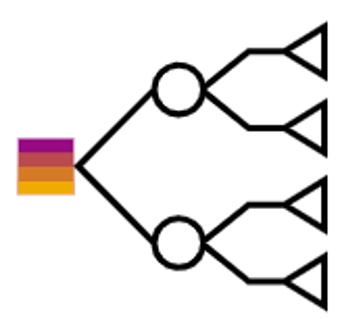
Enable precision with impactful models
Access advanced modeling capabilities for creating meaningful insights through sophisticated business-centric profitability, cost, and process use case models.

Amplify and extend your insights
Complement current intelligence to add deeper and richer analysis shaped to your business needs, then extend these new insights across an enterprise of users.

Activate steering through real-time decisions
Act with speed and agility and steer a course toward optimal performance by making informed strategic decisions based on real-time results and simulations.
Key Features
SAP Profitability and Performance Management helps businesses with extensive reporting capabilities that enables not only realistic assessments of the company’s processes but also conduct what-if analyses using intricate and detailed models. Notably, in the context of the PaPM solution, the number of variables can be significantly higher compared to other market-available solutions. This allows for the examination of how a specific change will impact, for instance, fixed costs or profitability at the individual product or feature level, rather than just the entire enterprise.

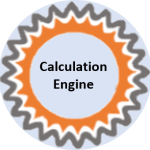


Data Aggregator
SAP Profitability and Performance Management uses the SAP standard application interfaces from the SAP or non-SAP applications for data read access which will be further used by the PaPM calculation engine for forecast and allocations. Businesses could see the results in PaPM using these live data from S/4 HANA.
PaPM allows businesses to view the allocation results on the fly by enabling the best business decision process-oriented tool.
Calculation Engine and Simulation
The calculation engine of SAP Profitability and Performance Management allows business users to design and execute financial and business models by configuring and combining functions across the functional modules.
The simulation application capabilities of SAP Profitability and Performance Management enable the execution of what-if scenarios for business users and the management of assumptions and drivers. Based on the granularity of the financial model, it allows drill-down from high-level to very detailed results and provides transparency by offering traceability and auditability information.

Key Functions
- Interest, Currency
- Economic Indicator models
- Behavior Models
- Estimated Cash Flow Processing
- Virtual and Physical Data Models
- Adapters for files and systems
- View, Join Union and Collection
- Derivation and Lookup
- Currency and Unit Conversion
- Calculation and Formulas
- Process and Assumption Management
- Business Error and Event Management
- Calculation and Formulas
- Analytic Queries and Reports
- Modern Value Flow Visualizations
- Optional: MS Excel Frontend
- SQL, R, Java, ABAP
- Graph, Scala Spark
- Python, etc.
- Assessment and Global Transfer Pricing
- Activity Based Costing
- Top-Down Distribution
- Dimension-based and Deterministic Models
- Predictive and Machine Learning Models
- Stochastic Models
- Matched Maturity
- Net present value
- Replicating portfolio
- Market Risk
- Counterparty Default Risk
- Life and Non-Life Risk
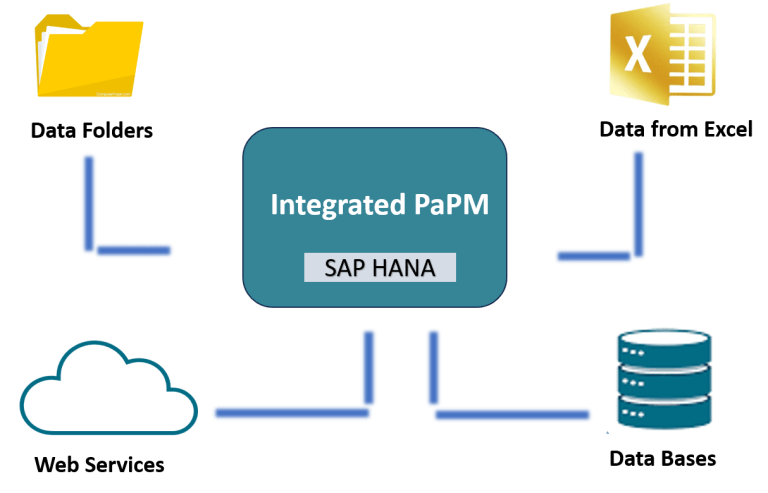
Integration
SAP Profitability and Performance Management (PaPM) can be deployed both in the cloud and on-premise and covers various integration scenarios by considering deployment options of both Cloud and On-Premise systems.
SAP Profitability and Performance Management can be used on a separate instance and can still be integrated with other SAP and non-SAP components.
SSR Fintech recommends to implement SAP Profitability and Performance Management as closely as possible to the source data. If other applications that contain relevant data are already installed on SAP HANA, we recommend that you use SAP Profitability and Performance Management on the same SAP HANA platform or even on the same instance to ensure optimal performance and the maximum reuse of existing data and metadata, such as hierarchies, master data, and so on.
SAP PaPM uses the official application interfaces from the SAP or non-SAP applications for data read and Write access, for example, CDS views, from SAP HANA or SAP S/4HANA, open CDS views from SAP BW or BW/4HANA, calculation views from CAR, FSDM, and BDMA – either locally or remotely via smart data access. If this redundancy-free approach is not feasible, SAP Profitability and Performance Management uses other official application interfaces, such as SAP BAPIs and Web services, or classic file imports of various formats.
Case Study – Inter-company Transfer Pricing
Inter-company transfer pricing of goods, services, or intangibles between related parties involves determining the prices at which different units or subsidiaries of the same company transact with each other. Setting appropriate transfer prices is crucial for various reasons, including tax implications, financial reporting, and overall business performance. However, this comes with its challenges for business users in terms of information availability, Transfer pricing methods, Tax Planning, and Simulations of data across the organizations.
Business Challenges in Transfer Pricing:
- Finding reliable and comparable data for determining arm's length prices can be challenging, particularly for unique or specialized products and services (Lack of Comparable data)
- Identifying and quantifying the value of synergies or shared resources within the group can be subjective and may lead to disagreements among subsidiaries. (Intra-Group Synergies)
- The fast-paced changes in business models, technologies, and market conditions can make it difficult to establish and maintain transfer pricing policies that accurately reflect the economic realities of the business. (Rapid Changes in Business Models)
- Valuing and pricing transactions involving intangible assets, such as patents or trademarks, can be complex and may require specialized expertise (Intangible Asset Valuation).
- The regulatory environment around transfer pricing is subject to change. Keeping abreast of regulatory updates and ensuring compliance with evolving standards can be a constant challenge (Changing Regulatory Landscape).
Solution
SAP PaPM is a versatile tool that can be applied to various aspects of financial management including transfer pricing with integration from S/4 HANA Transactional system for simulations and allocations.
- Automation of intercompany services and tangible goods transactions in compliance with adherence to transfer pricing policies between the group by considering the local tax regulations.
- Pre-defined processes using PaPM Modelling enables organizations to plan, adapt, and monitor the profitability of groups.
- Perform calculations to gain key profitability insights deriving from your transfer pricing policies across the related party transactions and pricing based on the type of transfer considering Goods / Services or Intangibles.
- Implement, monitor, and improve such policies in the context of (large-scale) ERP transformations.
Amplify your performance and profitability insights
Enable strategic decision-making to improve the performance of business and maximize profitability
SAP PaPM, or Profitability and Performance Management, represents a contemporary analytical solution designed for intricate calculations and simulations. This advanced system facilitates the generation of comprehensive reports and summaries for businesses, illustrating the interconnections within data at the most granular level, whether it’s individual products or their specific features, available to customers as a cloud or on-premise solution.
PaPM is built on the in-memory platform SAP HANA. Using the advanced potential of SAP HANA, SAP Profitability, and Performance Management is designed for business and provides instant insight by using a single source of truth, real-time processes, and agile financial and business modeling capabilities. Thanks to the principles of SAP Fiori user experience, it is designed to run simply and comfortably for business users.
SAP Profitability and Performance Management (PaPM), SAP provides a new generation of integrated performance management applications that do not require their own data model but can use and reuse existing data and information models from other SAP and non-SAP applications.
Migrate to Cloud Based Planning & Consoildation

Activate steering through real-time decisions
Act with speed and agility and steer a course toward optimal performance by making informed strategic decisions based on real-time results and simulations.
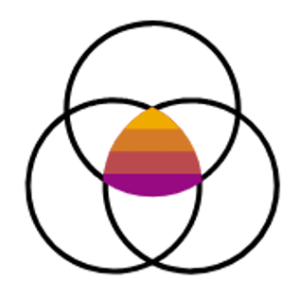
Amplify and extend your insights
Complement current intelligence to add deeper and richer analysis shaped to your business needs, then extend these new insights across an enterprise of users.
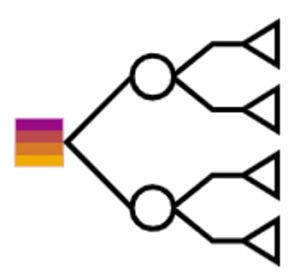
Enable precision with impactful models
Access advanced modeling capabilities for creating meaningful insights through sophisticated business-centric profitability, cost, and process use case models.
Key Features
SAP Profitability and Performance Management helps businesses with extensive reporting capabilities that enables not only realistic assessments of the company’s processes but also conduct what-if analyses using intricate and detailed models. Notably, in the context of the PaPM solution, the number of variables can be significantly higher compared to other market-available solutions. This allows for the examination of how a specific change will impact, for instance, fixed costs or profitability at the individual product or feature level, rather than just the entire enterprise.



Data Aggregator
SAP Profitability and Performance Management uses the SAP standard application interfaces from the SAP or non-SAP applications for data read access which will be further used by the PaPM calculation engine for forecast and allocations. Businesses could see the results in PaPM using these live data from S/4 HANA.
PaPM allows businesses to view the allocation results on the fly by enabling the best business decision process-oriented tool.
Calculation Engine and Simulation
The calculation engine of SAP Profitability and Performance Management allows business users to design and execute financial and business models by configuring and combining functions across the functional modules.
The simulation application capabilities of SAP Profitability and Performance Management enable the execution of what-if scenarios for business users and the management of assumptions and drivers. Based on the granularity of the financial model, it allows drill-down from high-level to very detailed results and provides transparency by offering traceability and auditability information.
Data Aggregator
SAP Profitability and Performance Management uses the SAP standard application interfaces from the SAP or non-SAP applications for data read access which will be further used by the PaPM calculation engine for forecast and allocations. Businesses could see the results in PaPM using these live data from S/4 HANA.
PaPM allows businesses to view the allocation results on the fly by enabling the best business decision process-oriented tool.
Key Functions
Cash Flow Modelling
- Interest, Currency
- Economic Indicator models
- Behavior Models
- Estimated Cash Flow Processing
Data Access
- Virtual and Physical Data Models
- Adapters for files and systems
- View, Join Union and Collection
Enrichment
- Derivation and Lookup
- Currency and Unit Conversion
- Calculation and Formulas
Processing Control
- Process and Assumption Management
- Business Error and Event Management
- Calculation and Formulas
Analysis and Reporting
- Analytic Queries and Reports
- Modern Value Flow Visualizations
- Optional: MS Excel Frontend
Process Extensions
- SQL, R, Java, ABAP
- Graph, Scala Spark
- Python, etc.
Profitability and Allocation
- Assessment and Global Transfer Pricing
- Activity Based Costing
- Top-Down Distribution
Plan and Forecast Modelling
- Dimension-based and Deterministic Models
- Predictive and Machine Learning Models
- Stochastic Models
Funds and Liquidity Transfer Pricing
- Matched Maturity
- Net present value
- Replicating portfolio
Risk, Capital, and Solvency
- Market Risk
- Counterparty Default Risk
- Life and Non-Life Risk

Integration
SAP Profitability and Performance Management (PaPM) can be deployed both in the cloud and on-premise and covers various integration scenarios by considering deployment options of both Cloud and On-Premise systems.
SAP Profitability and Performance Management can be used on a separate instance and can still be integrated with other SAP and non-SAP components.
High-Insights recommends to implement SAP Profitability and Performance Management as closely as possible to the source data. If other applications that contain relevant data are already installed on SAP HANA, we recommend that you use SAP Profitability and Performance Management on the same SAP HANA platform or even on the same instance to ensure optimal performance and the maximum reuse of existing data and metadata, such as hierarchies, master data, and so on.
SAP PaPM uses the official application interfaces from the SAP or non-SAP applications for data read and Write access, for example, CDS views, from SAP HANA or SAP S/4HANA, open CDS views from SAP BW or BW/4HANA, calculation views from CAR, FSDM, and BDMA – either locally or remotely via smart data access. If this redundancy-free approach is not feasible, SAP Profitability and Performance Management uses other official application interfaces, such as SAP BAPIs and Web services, or classic file imports of various formats.
Case Study – Inter-company Transfer Pricing
Inter-company transfer pricing of goods, services, or intangibles between related parties involves determining the prices at which different units or subsidiaries of the same company transact with each other. Setting appropriate transfer prices is crucial for various reasons, including tax implications, financial reporting, and overall business performance. However, this comes with its challenges for business users in terms of information availability, Transfer pricing methods, Tax Planning, and Simulations of data across the organizations.
Business Challenges in Transfer Pricing:
- Finding reliable and comparable data for determining arm’s length prices can be challenging, particularly for unique or specialized products and services (Lack of Comparable data)
- Identifying and quantifying the value of synergies or shared resources within the group can be subjective and may lead to disagreements among subsidiaries. (Intra-Group Synergies)
- The fast-paced changes in business models, technologies, and market conditions can make it difficult to establish and maintain transfer pricing policies that accurately reflect the economic realities of the business. (Rapid Changes in Business Models)
- Valuing and pricing transactions involving intangible assets, such as patents or trademarks, can be complex and may require specialized expertise (Intangible Asset Valuation).
- The regulatory environment around transfer pricing is subject to change. Keeping abreast of regulatory updates and ensuring compliance with evolving standards can be a constant challenge (Changing Regulatory Landscape).
Solution
SAP PaPM is a versatile tool that can be applied to various aspects of financial management including transfer pricing with integration from S/4 HANA Transactional system for simulations and allocations.
- Automation of intercompany services and tangible goods transactions in compliance with adherence to transfer pricing policies between the group by considering the local tax regulations.
- Pre-defined processes using PaPM Modelling enables organizations to plan, adapt, and monitor the profitability of groups.
- Perform calculations to gain key profitability insights deriving from your transfer pricing policies across the related party transactions and pricing based on the type of transfer considering Goods / Services or Intangibles.
- Implement, monitor, and improve such policies in the context of (large-scale) ERP transformations.
